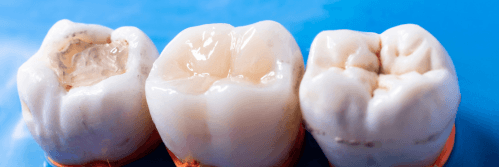
Most people have had a filling at some point. But fewer know there’s more than one way to repair a damaged or decayed tooth. When the goal is to keep your smile looking natural, tooth-colored fillings are the standard. But not all fillings are placed the same way.
If you’re exploring options for tooth-colored fillings in Humble, understanding the difference between direct and indirect techniques can help you make the right call for your smile.
Direct Fillings: Fast, Conservative Repairs
A direct filling is placed in a single visit. The dentist removes the decay and then fills the space with a composite resin that’s matched to your tooth color. It’s shaped, smoothed, and hardened on the spot.
This type of filling works well for:
- Small to moderate cavities
- Front teeth or visible areas
- Patients who prefer quick treatment
Because it’s done chairside, the entire process is efficient. Direct fillings don’t remove much of the tooth structure, which is why they’re considered conservative.
Indirect Fillings: A Custom-Made Fit
Indirect fillings are a bit more involved. They include inlays and onlays, which are crafted outside your mouth before being placed. Think of them as a middle ground between a filling and a crown.
You might be a candidate for an indirect filling if:
- The cavity is too large for a standard filling
- You want something that will hold up under heavy chewing
- The tooth already has a lot of wear or past restorations
These restorations are typically made from porcelain or stronger composites. They take a little longer—often two visits—but they’re known for excellent durability and precise fit.
So, Why Does It Matter?
Choosing between direct and indirect tooth-colored fillings isn’t just about cost or convenience. It’s about what your tooth actually needs. Direct fillings may work just fine for minor fixes, but they won’t hold up if half the tooth is missing. On the other hand, it’s not always necessary to go through the steps of an indirect restoration when a quick filling would do the job.
Dentists often weigh three things:
- How much healthy tooth remains
- Where the tooth is located in your mouth
- Your long-term risk of fracture or wear
Sometimes, the decision also comes down to lifestyle. Do you grind your teeth? Eat a lot of hard or crunchy foods? Those details make a difference.
Aesthetics, Longevity, and Expectations
Most people want their dental work to blend in. Tooth-colored fillings do just that, whether direct or indirect. They can be shaded to match your enamel and shaped to maintain the tooth’s original form.
In terms of longevity, indirect fillings tend to last longer because they’re fabricated under ideal lab conditions. But a well-done direct filling can also last many years with regular care.
Curious About Tooth-Colored Fillings in Humble?
The next time you’re at the dentist and hear the words "inlay," "onlay," or "composite," you’ll have a better sense of what they mean. Understanding the difference helps you have a more meaningful conversation about your treatment.
Whether you're getting a small cavity filled or planning a more involved restoration, the materials and approach should match your needs. Tooth-colored fillings in Humble aren’t one-size-fits-all—and that’s a good thing.
In Humble, many patients are leaning toward restorations that not only fix the tooth but also respect its structure and appearance. Talk to your dentist about which type of filling fits your situation best
